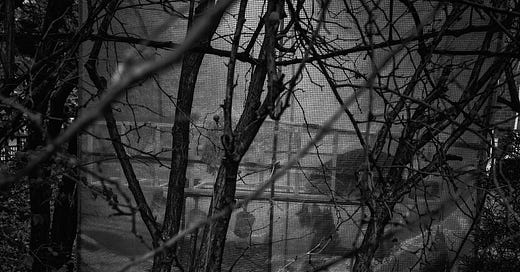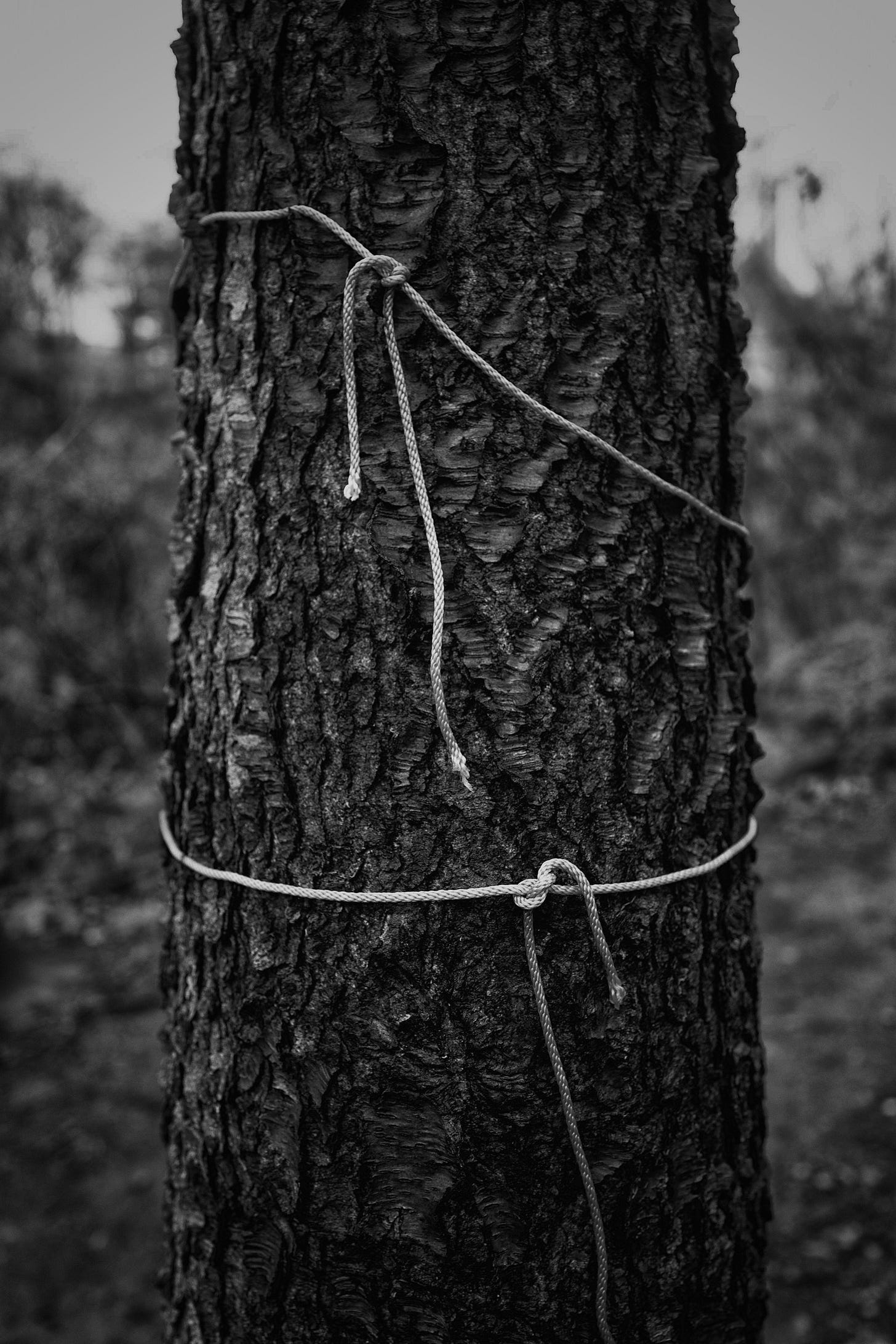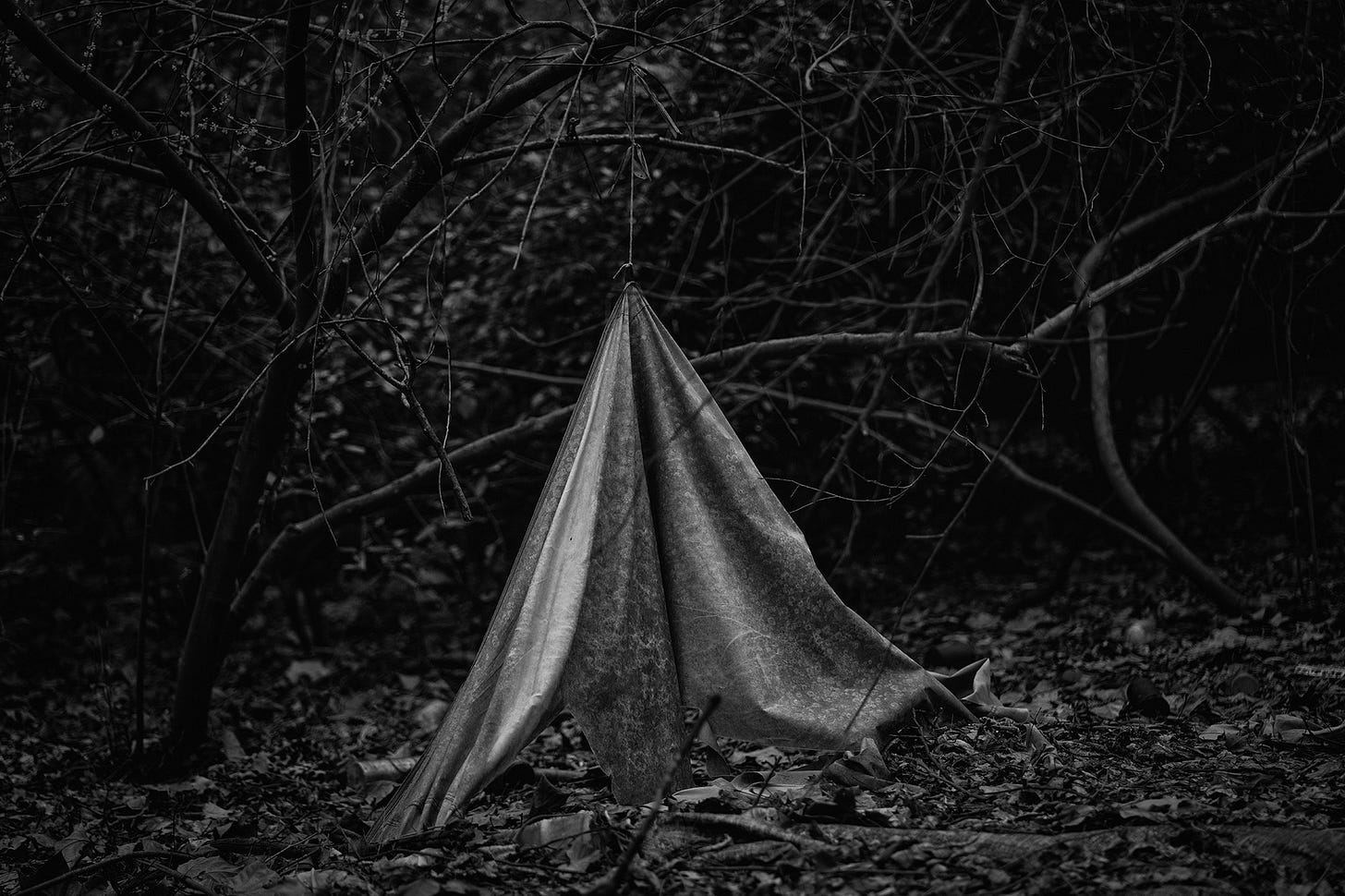Δ Light Readings : 015 - Rewilding my photography
or how I finally, sort of, started to appreciate John Gossage's The Pond
Hi! This draft sat for months, a tab in Safari that reminded me of something unfinished. Reading the Henrik Karlsson piece I linked below gave me the push to get it out the door (thx Henrik!).
It’s hazy here in DC today from the wildfires in Canada. The light is beautiful, a sort of dusky warm glow that wouldn’t look out of place in the background of an AI-generated digital image.
My name’s Stephen Voss and I’m a photographer based in Washington, DC. You can see my work on my website, and IG.
The photographs interspersed are from a personal project I’ve been working on this year.
“In the end, you’re only going to make something that’s as good as your preferences about what’s good.” - Ira Glass
I’ve owned John Gossage’s _The Pond_ for nine years according to my Amazon order history and when I took the book off my shelf a few weeks back, it had accumulated a thin layer of dust along its top edge. Gossage’s photographs depict a pond and the surrounding areas in a wooded area of Maryland (and, possibly, Berlin?) that seem to be situated near an industrial area.
The book has a loose narrative, at first glance it feels like a series of photographs taken on a single day. The opening image shows a dusty foot path curving away from a paved road towards a forest that's more scrub brush than trees. It’s mid-day and the vegetation seems dry, and sun-bleached.
My photographic background and early inspirations make a book like this easy to dismiss. Technically, the photographs are printed extremely flat, with blown-out highlights and dull, lifeless tones. If Gossage wants you to notice what he notices, he’s going to make you work for it. Flipping through it as I write this, I find myself remembering why I looked through this book a single time before relegating it to a high shelf.
Early on, my lodestars were the titans of the photojournalism world (Nachtwey, Meiselas, Kratchovil (ugh)). If I’d come across the photos of Richard Misrach or Robert Adams during that time, I don’t think I would have given them a second thought. They felt outside of the realm of my understanding of what photography could communicate and Adams especially was easy to look at and in that brashness of a young photographer, think to myself, “I could do that.”
And, truth is, I could do that. My early education in photography was as an imitator, aping different styles before figuring out what was important to me. But engaging with the aesthetic of a photographer’s work is different than engaging with the ideas of their work. And often, the ideas of a photographic book can help reveal the deeper magic of the photos themselves.
The thing I keep thinking to myself is that I’m certainly not the same photographer (or person!) I was when I began taking pictures, and the work I respond to now is quite different from the work I responded to then.
It goes to follow that the work I’ll respond to in a couple of years may be different than what I like now. But, to get there is to continue looking for that work that exists just outside of my zone of comprehension, to willingly spend time with photography that may not resonate at first, that may feel confusing or just frustratingly impenetrable.
It’s making those creative stretches, letting moments of discomfort linger, that I’ve seen have meaningful effects once I return to the confines of my work. That creative place I return to is no longer the same as it was when I left, that I’ve been knocked askew, that the circle I draw around my work feels a little bigger and maybe a little less fixed in place.
“To be able to go out on a day, and be able to make meaning out of ordinary life is a phenomenal gift. “ - John Gossage
And so, I continue to page through The Pond, a few months after I started writing this piece. Gossage gives you no road map for understanding what he’s doing, it doesn’t have the linear quality of the work that was formative for my development as a photographer and honestly, I still bristle a bit at some of the photos included. But, I’ve begun to appreciate this self-contained world that Gossage has created, this little sanctuary that seems to accept the detritus of human intervention with equanimity and find little pockets of beauty that stubbornly exist.
The book ends in a suburban doorway that separates the interior and exterior world. Well, the book really ends with a page from Henry David Thoreau’s Walden, with every bit of text except “The Pond” scribbled out. Is this a screed against human intervention in the natural world, or is it an acceptance of that effect? Or, maybe, it’s somewhere in between and the truer takeaway of this book exists in the ambiguity, the blurred lines and complexity of our relation to the world and how we might find a particular sort of grace in an imperfect and marred world.
A few months after first opening the book again, I still don’t know where I stand on its intent. But, the work hasn’t left me and despite still feeling a little ambivalent about the photographs themselves, engaging with the ideas of the book has bumped out the outer edges of my own work just a bit and imbalanced me. And that imbalance may be what I take from The Pond and let touch my own work.
Currently
👹🎶Listening to In Your Corner by Pale Jay which is just a wonderful summer jam (and a delightful music video).
🎨🧠This Henrik Karlsson’s essay, Two kinds of introspection, is a brilliant take on introspection in making art, and the distinction between a sort of navel-gazing approach to creation and the rolling-up-your-sleeves and getting down to work in order to discover what you want to make -
Why might it be that it is more productive for me to introspect by doing things, rather than by peering into my head more directly?
One reason is that doing things gives me more data to analyze. If you want to understand who you are or could become, it is helpful to learn more things and be active: improve your craft, put yourself in new situations, push yourself. How else are you going to have a sample of reactions to study? Kellie thinks that she might be an artist, but unless she has worked for hours trying to get something out of herself, she doesn’t know how she’ll react to that stimuli; most hate it. And if her craft is limited and her taste underdeveloped, she won’t be able to notice possibilities. Maybe she is a great painter of frescoes, but unless she learns how to mix lime plaster and apply color to it and steer the way the color floats, she can’t know. Getting out into the world will teach you a lot about yourself, and it will give you skills and mental models that allow you to better perceive options that might be right for you.
🍋🌿This Limonana recipe - While we were on vacation in Jordan earlier this year, we were served this drink a number of times and it’s an absolute flavor bomb of mint (which is taking over my garden) and lemon. Lots of the recipes for limonana do not actually blend in whole lemons and I think that’s the key to the drink.
Lastly, I stumbled across Catherine Hyland’s work in this NYT story on restoring peatlands in Scotland and have been going through her web site on and off all day. I especially love the series Universal Experience and am absolutely marveling at her portraits(!).
If you’ve made it this far and enjoyed the newsletter, I would greatly appreciate you sharing it by using the link below or posting someplace social. Thanks and see you next time.







